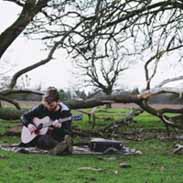Family History Of Breast Cancer Flashcards, test questions and answers
Discover flashcards, test exam answers, and assignments to help you learn more about Family History Of Breast Cancer and other subjects. Don’t miss the chance to use them for more effective college education. Use our database of questions and answers on Family History Of Breast Cancer and get quick solutions for your test.
What is Family History Of Breast Cancer?
Family history of breast cancer is an important factor to consider when assessing a person’s risk for developing the disease. It is especially significant if there are three or more first-degree relatives with a history of breast cancer. A family history of any type of cancer can increase the risk for other types, including cancers such as colorectal and ovarian cancer. Having a close relative with breast cancer raises your own risk but does not guarantee that you will develop it. Women with no family history also get breast cancer so it is important to be aware of the signs and symptoms and to have regular screening tests. The American Cancer Society recommends all women start having yearly mammograms by age 45 (or even earlier if they have additional factors which put them at higher risk). It is also important to know your family’s medical history in order to help make decisions about preventive measures, such as lifestyle changes or medications that might reduce your chances of getting certain diseases like breast cancer. If you are concerned about your own personal risks due to your family’s medical background, discuss this with your doctor who may recommend genetic testing or other screenings based on specific risk factors or patterns found in families dealing with similar health issues. Although there isn’t much one can do about his/her genes unfortunately, understanding one’s own unique risks associated with their family health background can help inform sensible choices regarding diet, exercise and lifestyle habits which could potentially lead towards reducing their chance for developing any form of cancer later down the line.. Taking into consideration these aspects along with regularly attending check-ups and screenings should prove beneficial in keeping abreast (pardon the pun) of any potential problems arising from inheriting a particular gene mutation linked to increased chances of developing particular forms of cancers such as Breast Cancer.























